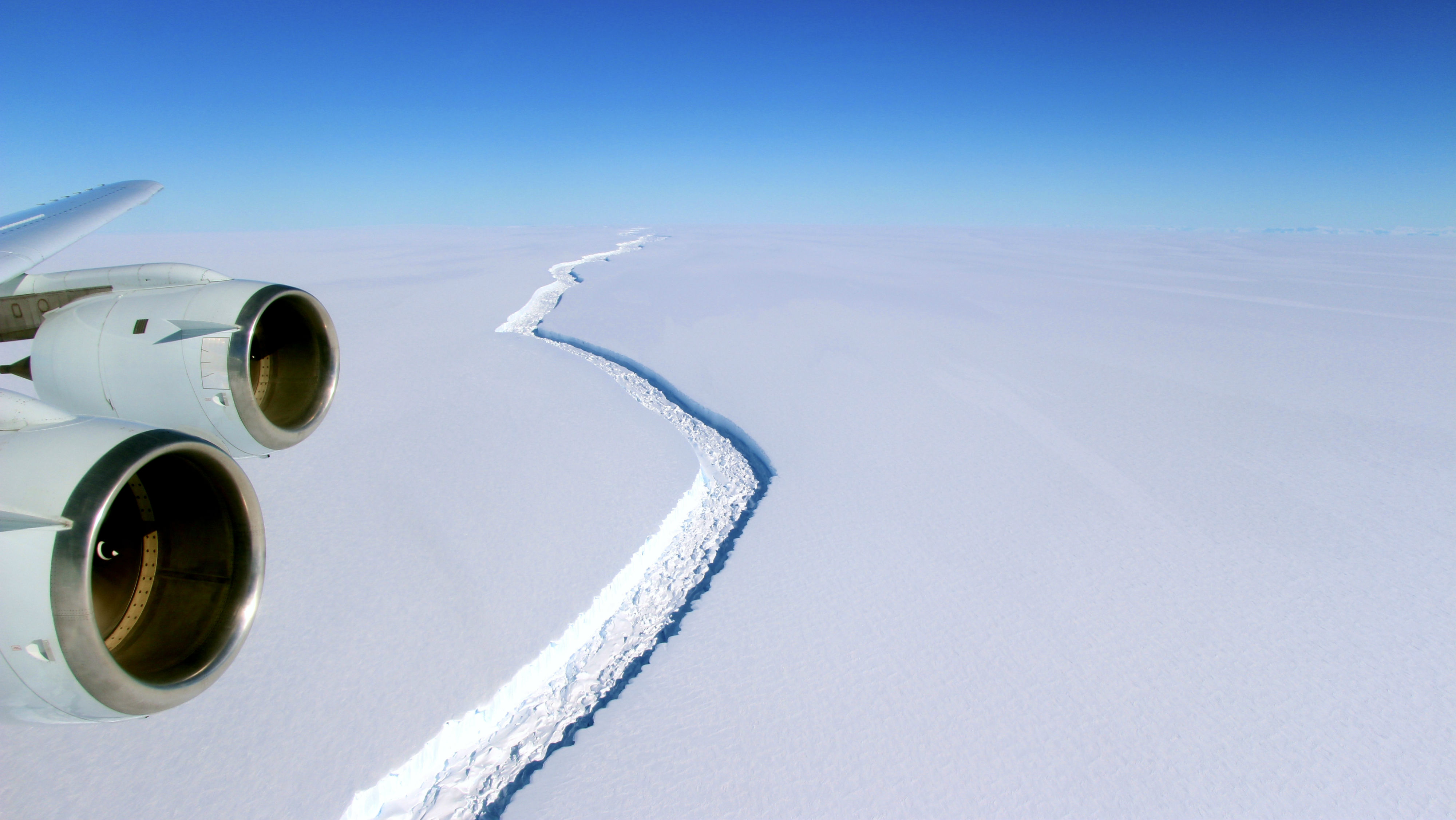Large part of Antarctic ice shelf is due to snap off
Crack has grown 11 miles in just six days

A massive stretch of ice is set to break off from one of Antarctica's largest ice shelves and create the world's biggest iceberg.
The crack in the Larsen C shelf, which has grown slowly for decades, recently started to accelerate. In just six days it has grown by an astonishing 11 miles.
Scientists have been tracking the rift growing along the Larsen C shelf for years. They now say the fracture is within eight miles of the sea and that there is "nothing to stop it fracturing".
The Week
Escape your echo chamber. Get the facts behind the news, plus analysis from multiple perspectives.

Sign up for The Week's Free Newsletters
From our morning news briefing to a weekly Good News Newsletter, get the best of The Week delivered directly to your inbox.
From our morning news briefing to a weekly Good News Newsletter, get the best of The Week delivered directly to your inbox.
Experts are waiting to see whether the process has been affected by climate change, reports Sky News.
At around the same size of the Caribbean nation of Trinidad and Tobago, the fragment will become one of the largest icebergs ever recorded once it breaks off.
The shelf is around 350m thick and is currently located at the edge of Western Antarctica.
Scientists at Project Midas, a UK-based research group studying the shelf, sayt there is very little time left until the fragment separates. The event has far-reaching consequences. It would change the Antarctic landscape dramatically, creating an unstable shelf.
A free daily email with the biggest news stories of the day – and the best features from TheWeek.com
Adrian Luckman, a Project Midas scientist, said: "We have previously shown that the new configuration will be less stable than it was prior to the rift, and that Larsen C may eventually follow the example of its neighbour Larsen B, which disintegrated in 2002 following a similar rift-induced calving event."
While the Larsen C event is believed to be the result of natural geophysical processes, scientists widely accept that climate change was a contributing factor in the disintegration of the Larsen A and Larsen B shelves in 1995 and 2002 respectively.
-
 How drones have detected a deadly threat to Arctic whales
How drones have detected a deadly threat to Arctic whalesUnder the radar Monitoring the sea in the air
-
 A running list of the US government figures Donald Trump has pardoned
A running list of the US government figures Donald Trump has pardonedin depth Clearing the slate for his favorite elected officials
-
 Ski town strikers fight rising cost of living
Ski town strikers fight rising cost of livingThe Explainer Telluride is the latest ski resort experiencing an instructor strike
-
 The Alps start the countdown to ‘peak glacier extinction’
The Alps start the countdown to ‘peak glacier extinction’IN THE SPOTLIGHT Central Europe is losing ice faster than anywhere else on Earth. Global warming puts this already bad situation at risk of becoming even worse.
-
 How Bulgaria’s government fell amid mass protests
How Bulgaria’s government fell amid mass protestsThe Explainer The country’s prime minister resigned as part of the fallout
-
 Femicide: Italy’s newest crime
Femicide: Italy’s newest crimeThe Explainer Landmark law to criminalise murder of a woman as an ‘act of hatred’ or ‘subjugation’ but critics say Italy is still deeply patriarchal
-
 Brazil’s Bolsonaro behind bars after appeals run out
Brazil’s Bolsonaro behind bars after appeals run outSpeed Read He will serve 27 years in prison
-
 Americans traveling abroad face renewed criticism in the Trump era
Americans traveling abroad face renewed criticism in the Trump eraThe Explainer Some of Trump’s behavior has Americans being questioned
-
 Cop30: is the UN climate summit over before it begins?
Cop30: is the UN climate summit over before it begins?Today’s Big Question Trump administration will not send any high-level representatives, while most nations failed to submit updated plans for cutting greenhouse gas emissions
-
 Nigeria confused by Trump invasion threat
Nigeria confused by Trump invasion threatSpeed Read Trump has claimed the country is persecuting Christians
-
 Sanae Takaichi: Japan’s Iron Lady set to be the country’s first woman prime minister
Sanae Takaichi: Japan’s Iron Lady set to be the country’s first woman prime ministerIn the Spotlight Takaichi is a member of Japan’s conservative, nationalist Liberal Democratic Party